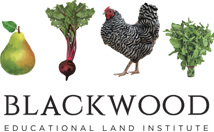By Hans Hansen
Here’s a seed germination chart to help you get the Fall and Winter garden started.
Starting seeds in an un-cooled greenhouse or shade house during July and August, in Texas, is one of the most challenging things a gardener can do. Looking at the chart germination temperatures of veggies we want to enjoy October onward are not exactly a match to the temperatures we have in the greenhouse right now, or for awhile but with a little coaxing, maybe a few tricks, you can get them started.
It’s best not to plant your seeds before a string of mid-90 to 100 degree 10 day forecast, if you can avoid it. One strategy is to compensate for a poor germination rate by planting more seed. Don’t feel bad if you have to replant your seeds a couple of times. During hot years (non-stop 95 plus temps through July/August (ugh!!!), I’ve planted broccoli up to times before I got the number of starts I needed, just to get a crop in early enough to harvest first heads late December to mid-January.
Tricks? If your greenhouse or propagation space is hot, place your seed trays in a shady spot that gets a nice breeze. The water evaporation will cool the air around the seedlings. Misting your seedlings lightly a few times during the hot part of the day helps (but be careful not to saturate soil – cake moist soil is perfect). Once your seedlings emerge, you can move them to a greenhouse with good ventilation and 40-60 percent sun block – 40% block (60% of sun comes through) is the best around shade gauge to get if you can only afford one cover.
Another trick is to start your seeds in an air conditioned location, if you have the space to do so. If you have an LED or CFL double strip light, you can allow your seedlings to grow inside to the first or second set of leaves before moving them to a shady wind protected area for a – days or under shade cloth, before setting them in the garden.
I must mention something about keeping your seedlings hydrated at this time of year. One missed watering cycle is it takes to ruin a good batch of seedlings. Keeping seedlings moist is difficult for busy people, including farmers. I recommend installing a simple and inexpensive automated low volume sprinkler system. The components include: ) a battery operated water timer that can be mounted on your outdoor faucet ) a water hose ) a sprinkler that provides good coverage (finer the drop size the better) and can operate with the water pressure turned down a bit. Ortho makes battery operated water timer for less than 30 dollars (Lowes) that allows enough flexibility for watering times per day, of a few minutes duration each. If you’re comfortable tackling lawn irrigation repairs etc, you can rig up something more sophisticated with lawn sprinkler components. If you’re not into that kind of thing, a good lawn sprinkler with consistent coverage and water volume turned down will do. I’ve done it both ways successfully. You still have to monitor your seedlings, adjust the water during the seedling cycle, but if you’re not home for an entire day, you know your seedlings will be fine.
Remember, even if you are off to an early start, your cool season veggies are looking super at planting stage, you are not out of the woods yet. Garden surface temperatures can be wickedly hot – 120 degrees plus – in August, sometimes through September. Take your shoes off in the garden mid-afternoon, if it’s too much heat for your feet to handle, it’s going to be too much heat for your delicate seedlings as well. At ground surface temperatures this hot, they may become stunted if planted without a cover to filter the light intensity (spun poly fabric or shade cloth). A in -4″ layer of mulch (seedlings planted through the mulch) will keep soil temperatures cool and moist.
Want to learn a few more tricks to get your Fall and Winter seedlings going? Join us this Thursday morning for a hands-on propagation learning experience.
